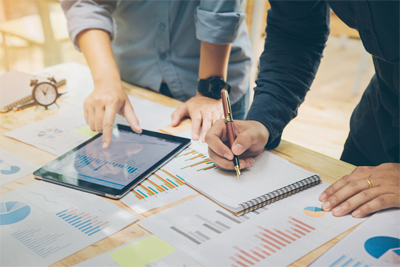For a very long time, farming was considered as an occupation relied on gut instinct. Information about the land and farming ethics has been passed from generation to generation like an heirloom.
Things have started to change since the mid-1990s. Like any other industries like health care and transportation, agriculture too is going under a profound transformation.
In the recent years, farmers are becoming more tech-savvy with the use of technologies like sensors, satellite imagery, GPS and big data analytics to build connected farms.
These connected farms are expected to be more efficient, productive and profitable. People are calling this a new revolution in the farming, which aims that every farming operation, from soil moisture to the number of seeds planted to the crop yields, must be tracked.
With sensors being used to track the yield data, nearly all of the farming operations now involve some sort of data gathering. And this data is being used to make the necessary decisions.
Everything from what types of seeds are planted where, yield data during harvest, how long the tractor has been running, its fuel consumption etc. are measured to ensure efficiency.
Also read: 6 mistakes businessmen make when they work with Big Data
This data is sent automatically to cloud-based software, which means there is no need to sit in front of a computer and feed the data manually. This, in turn, lets a farmer spend more time with his family than in farms.
Agriculture technology has become a big business with billions of investment in farming technology. Investing in the cloud-based software has become a trend for the companies in the farming industry.
This cloud-based software is used in measuring different factors like soil moisture, climate, sunlight and pests which help farmers in formulating a strategy for the next year to harvest the maximum yield.
Though the sensors are the backbone of the connected farm, what’s revolutionizing the working and living of the farmers is the ability to parse the data automatically.
Many companies are now involved in creating platforms that simplify the way farmers’ data is aggregated, analyzed and presented. Recently we have developed an IoT solution named Oval which detects moisture, light, humidity, and motion by which we can simplify the way we live and helps us in taking smarter decision.
Also read: 5 Examples of Using Computer Vision
Those companies which are handling the big data sets like a billion plots of different crops across several states are using custom-made tools to calculate predictive yields so that farmers gain more knowledge and awareness about their crops’ true worth.
These tools analyze the big data to understand the connectivity between weather, topography, soil, and precipitation and use that to form an algorithm which forecasts the amount of yield for any field in the country.
An increase in data-relied operations let farmers approach new companies which are out of the agriculture realm. At the same time, many B2B companies are stepping in to provide B2Farm services, helping the farmers to manage, gather, store and analyze this huge amount of data.
Also read: From Farm to Fridge: How IoT Can Revolutionize Agriculture & Farming?
Conclusion
Farmers will have to take advantage of the connected farms if they are looking to stay in the increasingly competitive market.
With the growing population and limited farmable land, farmers need to grow more efficiently than ever.
It will be beneficial if farmers can be provided with as much information as possible regarding what to produce and how to produce along with means to survive environmental challenges, climate and weather challenges, pest and disease challenges, and variability in the world market.
Farming is no more just a lifestyle; it has become a booming business.









